
Wine Culture and Information since 2002 - Volume 22
 Wine Culture and Information since 2002 - Volume 22 |
|
Issue 112, November 2012 |
Contents |
|
|
Podcast and Seminars |
|
The year 2012, besides marking our tenth year of activity, brings many novelties. The first one of them, announced two months ago, is the Android application DiWineTaste Mobile, which can be freely downloaded from Google Play Store. On this regard, I would like to thank all of our readers who expressed their appreciation with their mails, most of them including good suggestions as well. The Android application has been the first of the events and novelties with which we are going to celebrate our ten years. it is, of course, a young project and, as such, subjected to future development: the journey has just begun. DiWineTaste Mobile for Android will not however be alone, as we are already working on the development for other systems, including Apple's iPhone and iPad. Not just because we want to satisfy the many requests we had from readers using these systems, but also because it is a natural evolution for a software project that, since the very beginning, was intended to be released for other systems as well. We decided to start with Android and, of course, it is just the beginning. It is however the first initiative with which we want to celebrate our ten years of activity and enter our eleventh. Internet, since the times it has been available to the “mass” using a personal computer, has spread in an incredible way and the its use has gone far beyond its initial goal. It should be noticed it was a project started at the end of 1960s and only at the beginning of the 1990s reached a planetary success, in particular, thanks to the huge development it had in universities and research institutes, largely done with Unix systems. The spreading of the “Mother of all Nets” has reached a planetary level - the addressing system is showing evident limitations since a quite long time - and the way with which it is being used has gone far beyond the “simple” computers for which it was destined. Mobile devices and GPS navigation systems, as to provide simple examples, offer to the user specific services realized by means of an Internet connection. Users, this in undeniable, like to have Internet always available, first of all, on their mobile phones. DiWineTaste Mobile has been developed in order to satisfy this need: to offer the possibility of using our Guides, reading the magazine and using our services, when the user is away from a computer and however likes to get information about a wine or a place. I like to think this new tool capable of satisfying the needs of our readers when they are moving from one place to another, while they are planning a pleasing evening with friends and are looking for a wine or a place. Or when they are, for example, in a train or in a bus, while they are going to their work places or going home, and - eventually - they have ten or fifteen minutes available while waiting to get to the destination. Many things can be done in this period of time: you can read - and this is always wise to do - listen to the radio or, nevertheless, listening to a show dedicated to wine, even broadcast through a podcast. The idea of publishing a podcast about wine is on my mind since many years. With the release of the application DiWineTaste Mobile, this idea became stronger and stronger, and I could not wait any longer. It is my pleasure, therefore, to announce the birth of DiWineTaste podcast, available both in Italian and English languages, which I see as a further development for the mobile application. In the near future, this is unavoidable, it will be available and integrated to DiWineTaste Mobile. For the moment, you can listen to our podcast by using any software developed for this purpose, both on your computer as well as on your mobile device. You can find it on Apple's iTunes, or in the main podcast directories available on the Internet, and, of course, in our web site as well. The podcast is hosted by me, with episodes thought to be quick and practical, not so long, in order to give simple and essential information. DiWineTaste podcast will not have a fixed schedule. The episodes will be released with a variable scheduling, according to the subjects. Our readers can simply subscribe to the our RSS podcast channel or entering the URL in their favorite application: http://www.diwinetaste.com/podcast.php?c=1 for the Italian language channel, http://www.diwinetaste.com/podcast.php?c=2 for the English one. Alternatively, you can simply click the button available in the home page of our site. There is more. It is now about twenty years I am working in the field of education related to wine sensorial tasting, distillates, tea, coffee, beer, olive oil and cheese, as well as classes about subjects related to cooking, service and restaurants. When DiWineTaste was published, all of my events have been organized with the endorsement of my magazine, with a monthly schedule for our readers and historically held in Perugia - the city where our offices are located - at the Locanda dei Golosi, a restaurant successfully managed by my friends Emiliano, Manuele and Roberto. November will see the inauguration of a new kind of events for our readers and friends: Five Diamonds Seminars. It is about events dedicated to the study and tasting of wines and wineries which had at least one of their products awarded with Five Diamonds, therefore, wine and wineries of excellence, representing the highest enological expression. The city in which our seminar will make their debut is Milan, also because we wanted to meet the many requests our readers from Northern Italy sent to us. In fact, they are not events dedicated to Milan and Milanese people, indeed, they are event for all of our readers, in particular for those living in Northern Italy. Five Diamonds Seminars will be inaugurated with one of the most prestigious and important wineries of Italy and its excellent wines: Arnaldo Caprai and Sagrantino di Montefalco. I wanted it was a winery from Umbria - among the highest enological expressions of the region and of Italy in the world - also for the fact this is the region where I was born and of which I am very proud of, likewise, I am proud of Sagrantino too, an unique and immense wine. A tribute to my land. The first seminar is scheduled for Sunday, November 11th, 2012 - 4:30PM, at Vinodromo in Milan. Seminars have a limited number of places and, just like our events, reservation is obligatory. You can find more information and book the Five Diamonds Seminar at the page events in our web site. Podcast and Five Diamonds Seminar are then added to the other services we are currently offering to our readers, wishing they will meet your interest and satisfaction. I will wait for you in Milan at our Seminar and, of course, in Perugia for our next Event dedicated to Cantine del Notaio. Subscribe to our podcast and enjoy it! Antonello Biancalana
|
||||
The Pleasure of WineThe pleasure of the beverage of Bacchus is a factor in continuous evolution, something undergoing the influence of culture and change of taste |
|
Wine, when you drink it with the virtue of moderation, certainly is a pleasure. Pleasure of understanding a millenary culture, pleasure of good company and good food - wine, since ever, directly recalls convivial pleasures, a beverage having a high social meaning - and, last but not the least, pleasure for senses. Wine is also the expression of man's genius, who has been capable of transforming a matter provided by Nature - grape - into an excellent beverage, by controlling and interacting with a natural process, which, unavoidably, leads to the creation of vinegar. Wine, and the pleasure of wine, demands for respect, not only for the culture and expression of human kind evolution, but also in order to be understood, to understand the pleasure it can give. With no respect, that is when it is abused and drunk in excess, wine gives the same kind of respect in return, by abusing both the health and dignity of whom, recklessly, pays no respect to it. And, after all, in this case he or she is just not respecting himself or herself. This is true for everything and wine is no exception: everything can be “good” or “bad” according on how it is being used or abused. Wine is not a pleasure for senses only. Medical science knows, since a long time, the wise consumption of wine can be beneficial to the health, something certainly not happening with the excess. The healthy virtue and quality of wine were known since ancient times: not only it was an ingredient for corroborating drinks, but also a fundamental ingredient for elixirs made of herbs. On this regard, it should be noticed the “medical” use they made in the past of sweet wines, frequently made with grapes affected by noble rot, that is Botrytis Cinerea. These particular and very expensive wines were prescribed by doctors for the rehabilitation of patients. Because of their high price and value, this was a remedy which could be afforded by few people and, of course, there were few who could pour these wines in their glasses, even for pleasure. Destined to the rich and noble classes, sweet wines were rarely found in the tables of the poor people, save the case they had a vineyard and decided to sacrifice part of the grapes that, allowed to dry, were used for the production of sweet wines and, in any case, was literally served in very rare occasions and in very small quantities. Wine, undeniably, has always caught the interest of men for its hedonistic qualities, not only for its property of giving pleasure to the senses. Companion of the good table since the beginning of humanity, in the course of history, every meal had wine as the “natural” choice for accompanying food. This, of course, was true in the countries in which vineyard was widely found in the culture and local economy, in particular, the countries of the Mediterranean area. Not only in the table, but also in relax moments, wine has always accompanied the “pleasures of men”, favorite beverage of social moments, both informal and formal ones. A solemn beverage, with a high ritual meaning, wine has always been poured at the end of important meetings in order to celebrate the reaching of an agreement or pact. Moreover, the toasting represents the highest form of wish for a good health and good company: it is always made in celebration moments.
On this regard, it is interesting to know the etymology of Italian brindisi, that in English language is translated as to toast. Brindisi comes from German bring dir's, literally I bring (the glass) to you as a form of wish and greeting. In English speaking countries it is used toast instead, which meaning recalls the “toasted” slice of bread, as, in past times, the English were used to “dip” toasted bread in a glass of wine before drinking it. The famous Italian cin cin used to make a toast, has a funny origin. It seems it was introduced from Southern China and it was a form of kind and friendly greeting used by sailors who were saying qing qing, literally meaning please, please. The reason for which this habit became common in Italy - in the past was also common in other European countries as well - is probably because of the sound glasses made when they are “touched” at the moment of the toast. Moreover, of Latin origin, the word prosit, meaning “may it be favorable (to you)”. In any case, wine has always been associated to a favorable wish and of good health. Pleasure of the good table, pleasure of the good company, pleasure of exchanging favorable wishes and, in particular, pleasure of quality wine. Since the times men discovered how to transform grape juice into an inebriating and pleasing beverage, they have always tried to make it more and more pleasing and good. Around wine production, this is something undeniable, there has always been a sort of competition among those who were capable of making the best wine, the one capable of giving the best pleasure to the senses of men. This is proved by the endless debates about this subject, opinions, guides and positions: all having the same goal, that is to state and determine the best wine, that is, the most agreeable one having the best quality. In the course of mankind history, wine has probably been the product of land for which men have debated more than anything else and for which have been started competitions, even harsh ones, and for which men put a strong attention about its quality and agreeability. This is also witnessed, for example, by the many mentions it had in writings and books since remote times, in which were reported the best wines and the best areas capable of giving the best. Appearance, smell, taste, emotions: these are qualities required for a good wine in order to be considered agreeable. The pleasure of wine is not however something simple to define, as this is a highly subjective thing and strongly influenced by mood, culture and, last but not the least, social, psychological and historical factors. Pleasantness in a wine, or better to say, the taste for an pleasant wine, has certainly changed in the course of history. A wine produced at the times of ancient Romans - for example - following wine making techniques and taste considered to be pleasant at those times, it is very likely it would not meet the taste of “modern” men. The same, this is very likely too, can be true for the opposite: the modern reference of taste and pleasantness of wine, could be considered unpleasant and of bad taste for ancient Romans. Witnesses about wines produced in remote times, give the beverage of Bacchus a basically sweet or evidently sweet taste. Descriptions sometimes give the idea of a wine with a basically acid taste, maybe because of the scarce knowledge at those times about wine making. Enology is a science which required centuries of study and experience in order to understand the vinification process. Moreover, this can also be because of the difficulties in the keeping of wine or because of critical conditions which could not allow a complete fermentation. These considerations could also explain the custom of diluting wine with water - including seawater, therefore salty - adopted in occasion of symposia in ancient Greece times or bacchanals in ancient Rome. This practice seems to be adopted in order to mitigate both sweetness as well as acidity of wine, therefore increasing its drinkability. On this regard, it should be noticed that, at those times, drinking a wine non diluted with water - therefore pure - was considered vulgar and impolite. Wine, as we know it today, that is with a dry taste, is the product of a wine making and taste evolution, a practice having a little more than 400 years of life. The improvement of wine making techniques has been primarily developed thanks to the work done in many monasteries in Europe, in particular in those belonging to Benedictine, Cluniacensis and Cistercians orders. Wine, as it is commonly known, is a fundamental element for the Eucharist in Christian rites, therefore vineyard and wine were fundamental products for monasteries. This allowed both the safeguarding of vineyard and wine in Europe, as well as the concrete and fundamental evolution of enology and it will be thanks to this knowledge that wine became dry while abandoning its traditional sweet taste. It is also thanks to the job done in monasteries that allowed the improvement of one of the most famous wine of all times: Champagne. As it is commonly known, this renowned wine was improved in the abbey of Saint-Pierre d'Hautvillers by Dom Pierre Pérignon, although - it should be noticed - refermentation in bottle was a practice already known at those times and probably of Italian origin. The pleasure of wine - and everyone would certainly agree on this - is mainly associated to its quality and, therefore, to the absence of faults. It should be said that, frequently, a “perfect” wine, with no apparent or evident faults, can also be considered as boring, predictable in its exact interpretation. In the last twenty years, the pleasure of wine and the way wine is seen, underwent many changes, adopting new styles and new fashions, subsequently denied while emphasizing the characteristics once considered unpleasant and ordinary. We could think, for example, about the fashion, almost obsessive, which was very common about twenty years ago which had as its main protagonist the barrique. At those times, it was enough to say “barrique” or to mention it in labels, in order to ensure most of the commercial success. Every wine fermented or aged in barrique, was considered a quality wine, it was considered as an agreeable and pleasing wine. Today, we see the opposite fashion: even pronouncing the word “barrique” evokes an opposite feeling, emblem of the highest sign of a wine making homologation. Likewise, after having emphasized the use of technology in wine making, capable of producing impeccable wines, according to a technical point of view, but having the “fault” of making wines tasting all the same, today the fashion is to make wine produced with “ancestral” techniques. Today, even the slightest hint of aromas recalling the use of selected yeast, in general or trendy terms - or maybe, of opportunity - makes the wine to be classified as “industrial”. If once the aromas given by the activity of yeast were considered a sign of wine agreeability, today - for many wine lovers - those aromas are responsible of worsening the agreeability of wine. Wines produced with techniques, like to say, less exacting, however capable of giving wine a sensorial dimension of “past times”, those times, enologically speaking, denied by the majority and considered as “harsh”. Once wines fermented or aged in barrique - white and red, with no exception - were easily associated to quality and, therefore, to a pleasing product. Today, on the contrary, they try to favor the expression of grapes and territory. This aspect certainly is desirable, indeed, fundamental and important. Taste and culture of wine consumers are certainly changed in the last twenty years: it is undeniable in this period consumers have improved their culture and their analytic and critical knowledge about wine. This phenomenon certainly is useful for quality and agreeability of wine: exacting and “competent” consumers force producers to make wines capable of satisfying these needs, in other words, wines meeting the favor of market. In fact, today wine is wanted to have quality - something which is however subjective in many ways - as well as the quality of representing a territory and its grapes. These concepts are not unrelated to the concept of wine pleasure as they satisfy the psychological expectations of consumers who, frequently, are also willing to accept evident faults, provided it is a wine different from the others. The pleasure of wine, in the course of centuries, has changed and adapted according to the fashions and the habits of societies where it is being produced. Also important, the change - and with that, the model of agreeability - determined by nutrition habits and cooking. A beverage, today more than ever, with a hedonistic meaning, wine - also at the table - must be capable of giving pleasure while meeting the aromas and flavors of modern cooking. A good wine-food pairing, for example, increases the pleasure of the table as well as of the wine itself. There is however something we can be certain of: pleasure and taste of wine are destined to change in future. The model of quality will change and evolve - this is natural, after all - including the taste of men. Or it could also be that tastes of a remote time will become a new fashion, perhaps because of nostalgic and romantic reasons, something that, undeniably, we are also living in these times.
|
||||||||||||
Wines of the Month |
|
|
|
Score legend Prices are to be considered as indicative. Prices may vary according to the country or the shop where wines are bought |
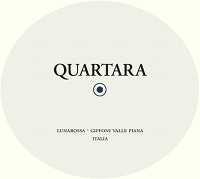
|
|
Quartara 2008 |
|
| Lunarossa (Campania, Italy) | |
| Grapes: Fiano | |
| Price: € 24.50 | Score: |
| Quartara shows a deep golden yellow color and nuances of golden yellow, very transparent. The nose denotes intense, clean, pleasing, refined and elegant aromas which start with hints of apple, plum and honey followed by aromas of orange, hawthorn, anise, almond, candied fruits, hazelnut, ripe peach, ripe pear, vanilla and mineral. The mouth has excellent correspondence to the nose, a crisp attack and however balanced by alcohol, full body, intense flavors, pleasing roundness. The finish is very persistent with long flavors of apple, hazelnut and honey. Quartara ferments and ages in amphora for 3 months, followed by 9 months of aging in cask and 6 months in bottle. | |
| Food Match: Stuffed pasta with fish, Roasted fish, Roasted white meat, Mushroom soups | |
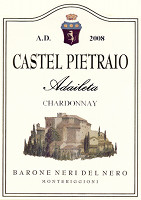
|
|
Adaileta 2008 |
|
| Fattoria di Castel Pietraio (Tuscany, Italy) | |
| Grapes: Chardonnay | |
| Price: € 12.00 | Score: |
| Adaileta shows a brilliant golden yellow color and nuances of golden yellow, very transparent. The nose denotes intense, clean, pleasing and refined aromas which start with hints of ripe banana, pear and hazelnut followed by aromas of citrus fruits, vanilla, hawthorn, apple and plum. The mouth has good correspondence to the nose, a crisp attack and however balanced by alcohol, good body, intense flavors, pleasing roundness. The finish is persistent with flavors of plum, pear and hazelnut. Adaileta ferments and ages in barrique for 9 months followed by at least 3 months of aging in bottle. | |
| Food Match: Pasta with fish and mushrooms, Sauteed white meat, Broiled fish | |
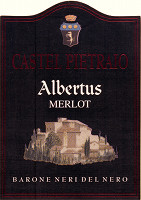
|
|
Albertus 2007 |
|
| Fattoria di Castel Pietraio (Tuscany, Italy) | |
| Grapes: Merlot | |
| Price: € 18.00 | Score: |
| Albertus shows an intense ruby red color and nuances of garnet red, little transparency. The nose denotes intense, clean, pleasing and refined aromas which start with hints of plum, black cherry and black currant followed by aromas of blueberry, dried violet, vanilla, tobacco, cocoa, leather and eucalyptus. The mouth has good correspondence to the nose, a tannic attack and however balanced by alcohol, good body, intense flavors, pleasing roundness. The finish is persistent with flavors of plum, black currant and black cherry. Albertus ages for 15 months in barrique followed by at least 12 months of aging in bottle. | |
| Food Match: Roasted meat, Broiled meat and barbecue, Stewed meat, Hard cheese | |
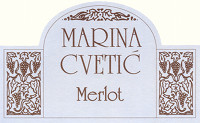
|
|
Marina Cvetic Merlot 2008 |
|
| Masciarelli (Abruzzo, Italy) | |
| Grapes: Merlot | |
| Price: € 20.00 | Score: |
| Marina Cvetic Merlot shows a deep ruby red color and nuances of garnet red, little transparency. The nose denotes intense, clean, pleasing, refined and elegant aromas which start with hints of plum, black cherry and black currant followed by aromas of dried violet, blueberry, blackberry, tobacco, vanilla, chocolate, mace, leather and menthol. The mouth has good correspondence to the nose, a properly tannic attack and however balanced by alcohol, full body, intense flavors, pleasing roundness. The finish is persistent with flavors of plum, black currant and black cherry. Marina Cvetic Merlot ages for 12 months in barrique followed by 12 months in bottle. | |
| Food Match: Game, Roasted meat, Stewed and braised meat, Hard cheese | |
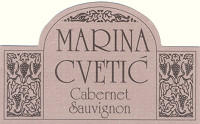
|
|
Marina Cvetic Cabernet Sauvignon 2004 |
|
| Masciarelli (Abruzzo, Italy) | |
| Grapes: Cabernet Sauvignon | |
| Price: € 48.00 | Score: |
| Marina Cvetic Cabernet Sauvignon shows a deep ruby red color and nuances of garnet red, impenetrable to light. The nose denotes intense, clean, pleasing, refined and elegant aromas which start with hints of black currant, plum and black cherry followed by aromas of dried violet, blueberry, vanilla, mace, cocoa, licorice, cinnamon, tobacco and eucalyptus. The mouth has good correspondence to the nose, a tannic attack and however balanced by alcohol, full body, intense flavors, pleasing roundness. The finish is persistent with flavors of black currant, plum and black cherry. Marina Cvetic Cabernet Sauvignon ages for about 24 months in barrique. | |
| Food Match: Game, Roasted meat, Stewed and braised meat, Hard cheese | |
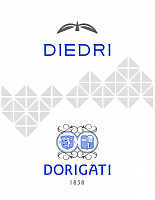
|
|
Teroldego Rotaliano Superiore Riserva Diedri 2009 |
|
| Dorigati (Trentino, Italy) | |
| Grapes: Teroldego | |
| Price: € 20.00 | Score: |
| Teroldego Rotaliano Superiore Riserva Diedri shows a deep ruby red color and nuances of ruby red, little transparency. The nose denotes intense, clean, pleasing and refined aromas that start with hints of black cherry, plum and violet followed by aromas of blueberry, pomegranate, blackberry, vanilla, tobacco, chocolate and menthol. The mouth has good correspondence to the nose, a tannic attack and however balanced by alcohol, good body, intense flavors, pleasing roundness. The finish is persistent with flavors of black cherry, plum and blackberry. Teroldego Rotaliano Superiore Riserva Diedri ages for 12 months in barrique, 6 months in steel tanks and for 6 months in bottle. | |
| Food Match: Roasted meat, Stewed and braised meat, Hard cheese | |
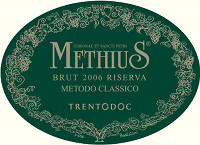
|
|
Trento Brut Riserva Methius 2006 |
|
| Dorigati (Trentino, Italy) | |
| Grapes: Chardonnay (60%), Pinot Noir (40%) | |
| Price: € 33.00 | Score: |
| Trento Brut Riserva Methius shows a pale straw yellow color and nuances of greenish yellow, very transparent, fine and persistent perlage. The nose reveals intense, clean, pleasing, refined and elegant aromas which start with hints of banana, apple and bread crust followed by aromas of pear, hazelnut, kiwi, yeast, plum, grapefruit, butter, hawthorn and pineapple. The mouth has excellent correspondence to the nose, an effervescent and crisp attack, however balanced by alcohol, good body, intense flavors, pleasing roundness. The finish is very persistent with long flavors of apple, banana and grapefruit. Part of the Chardonnay used for the base wine ferments in barrique. Trento Brut Riserva Methius referments in bottle on its lees for 5 years. | |
| Food Match: Roasted fish, Broiled crustaceans, Pasta and risotto with fish, Roasted white meat | |
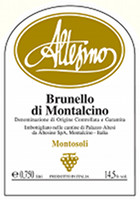
|
|
Brunello di Montalcino Montosoli 2007 |
|
| Altesino (Tuscany, Italy) | |
| Grapes: Sangiovese | |
| Price: € 65.00 | Score: |
| Brunello di Montalcino Montosoli shows a brilliant ruby red color and nuances of brick red, moderate transparency. The nose reveals intense, clean, pleasing, refined and elegant aromas which start with hints of plum, black cherry and dried violet followed by aromas of blueberry, blackberry, vanilla, tobacco, chocolate, cinnamon, mace, licorice and menthol. The mouth has excellent correspondence to the nose, a tannic attack and however balanced by alcohol, full body, intense flavors, pleasing roundness. The finish is very persistent with long flavors of plum, black cherry and blackberry. Brunello di Montalcino Montosoli ages for 4 years in cask, 4 months in barrique and 4 months in bottle. | |
| Food Match: Game, Braised and stewed meat, Roasted meat, Hard cheese | |
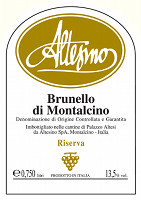
|
|
Brunello di Montalcino Riserva 2006 |
|
| Altesino (Tuscany, Italy) | |
| Grapes: Sangiovese | |
| Price: € 55.00 | Score: |
| This Brunello di Montalcino Riserva shows a brilliant ruby red color and nuances of brick red, moderate transparency. The nose reveals intense, clean, pleasing, refined and elegant aromas that start with hints of plum, black cherry and dried violet followed by aromas of blackberry, blueberry, raspberry, tobacco, vanilla, chocolate, cinnamon, leather, licorice, mace and menthol. The mouth has excellent correspondence to the nose, a tannic attack and pleasing crispness, however balanced by alcohol, full body, intense flavors, pleasing roundness. The finish is very persistent with long flavors of plum, black cherry and blackberry. This Brunello di Montalcino Riserva ages for 5 years, of which at least 3 in cask and 6 months in bottle. | |
| Food Match: Game, Roasted meat, Stewed and braised meat, Hard cheese | |
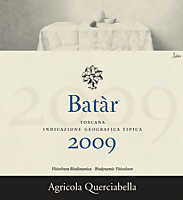
|
|
Batàr 2009 |
|
| Querciabella (Tuscany, Italy) | |
| Grapes: Chardonnay (50%), Pinot Blanc (50%) | |
| Price: € 50.00 | Score: |
| Batàr shows a brilliant golden yellow color and nuances of golden yellow, very transparent. The nose reveals intense, clean, pleasing, refined and elegant aromas which start with hints of apple, plum and hazelnuts followed by aromas of pear, banana, bergamot, honey, vanilla, grapefruit, peach, broom, hawthorn and mineral. The mouth has excellent correspondence to the nose, a crisp attack and however balanced by alcohol, good body, intense flavors, pleasing roundness. The finish is very persistent with long flavors of banana, hazelnut and grapefruit. Batàr ferments and ages in barrique for 9 months. | |
| Food Match: Roasted fish, stuffed pasta with mushrooms, Roasted white meat, Stewed white meat | |
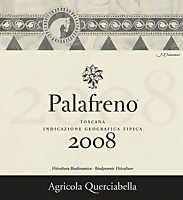
|
|
Palafreno 2008 |
|
| Querciabella (Tuscany, Italy) | |
| Grapes: Merlot | |
| Price: € 100.00 | Score: |
| Palafreno shows an intense ruby red color and nuances of ruby red, little transparency. The nose reveals intense, clean, pleasing, refined and elegant aromas which start with hints of black currant, black cherry and violet followed by aromas of plum, blueberry, vanilla, tobacco, pink pepper, chocolate, leather, mace and eucalyptus. The mouth has excellent correspondence to the nose, a properly tannic attack and however balanced by alcohol, full body, intense flavors, pleasing roundness. The finish is very persistent with long flavors of black currant, black cherry and blueberry. Palafreno ages for 18 months in barrique. | |
| Food Match: Game, Roasted meat, Stewed and braised meat, Hard cheese | |
TasteUmbria: Italian Wines Meeting in UmbriaIn Montefalco, in occasion the first edition of TasteUmbria, a meeting with twenty-seven wineries and their wines |
|
From October 19th to 21st, took place the first edition of TasteUmbria, in occasion of which some of the best wine producers of Italy met in Montefalco, presenting their wines to the international press. The initiative took place thanks to the idea of five wine producers of Umbria - Fattoria Colleallodole, Villa Mongalli and Tabarrini of Montefalco, Roccafiore of Todi and Madrevite of Castiglione del Lago - who decided to compare their wines with those of other Italian producers. For the occasion have in fact been compared, with the blind tasting method, 14 white wines and 19 red wines, judged by experts and journalists coming from all over the world. It should be said it was not a wine contest, but a wine exhibition with the goal of allowing participants to better know some of the best wines of Italy, including the best wines of the five Umbrian producers who organized the event.
TasteUmbria was also an occasion for non Italian guests to know and appreciate the monuments and gastronomy of Umbria - known as the “Green Heart of Italy” - favoring the touristic aspects of the region. The first two days of the event have been mainly dedicated to touristic promotion of Umbrian enogastronomy, with visits to the wineries of the five producers who have organized the event. TasteUmbria had its most interesting moment with the blind tasting of the wines produced by the wineries taking part to the event, a moment which ideally united the whole Country with the common goal of promoting their territories and their wine excellencies. The over 60 journalists and experts, from Italy and abroad, could therefore appreciate the many wine expressions of the Country in the very same event, bringing to the glasses grapes and wines from almost every region of Italy. Here it is the list of the twenty-seven producers who had their best wines presented at TasteUmbria: Giacomo Fenocchio, Ettore Germano, Köfererhof - Günther Kershbaumer, Tenuta Ansitz Waldgries, Ronco del Gelso, Aldo Rainoldi, Inama, Nicolis, La Cerbaiola - Salvioni, Isole & Olena, Le Macchiole, La Fornace, Fattoria San Lorenzo, La Valentina, Valentini, Pietracupa, Nanni Copè, Morella, Elena Fucci, Passopisciaro, Girolamo Russo, Graci, Fattoria Colleallodole, Madrevite, Roccafiore, Tabarrini and Villa Mongalli. The pleasing and interesting day - which took place at Tabarrini winery of Turrita di Montefalco, surrounded by the green Umbrian view - started with the tasting of white and red wines, followed by a lunch, in which have been served the wines of all the producers taking part to the event, therefore allowing their appreciation with food. The afternoon has been dedicated to the touristic visit of Bevagna and Montefalco villages, therefore ending with a dinner, consisting of dishes made of lake fish and served in the Polvese island of Trasimeno lake. Participants reached the lovely island with a ferry in which has been served an aperitif with the wines of the producers.
|
||||||||
News |
|
In this section are published news and information about events concerning the world of wine and food. Whoever is interested in publishing this kind of information can send us a mail to our address.
|
AquavitaeReview of Grappa, Distillates and Brandy |
|
|
| Distillates are rated according to DiWineTaste's evaluation method. Please see score legend in the "Wines of the Month" section. |
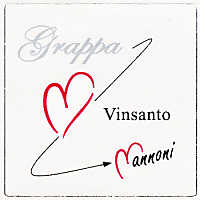
|
|
Grappa Cuore di Vinsanto Stravecchia |
|
| Nannoni (Tuscany, Italy) | |
| Raw matter: Pomace of Vinsanto | |
| Price: € 59.00 - 50cl | Score: |
| This grappa shows a brilliant golden yellow color, limpid. The nose reveals intense, clean, pleasing, refined and elegant aromas of honey, hazelnut, tobacco, dried fig, chocolate, licorice, date and raisin, with almost imperceptible alcohol pungency. In the mouth has intense flavors with perceptible alcohol pungency which tends to dissolve rapidly, balanced sweetness, pleasing roundness. The finish is very persistent with flavors of honey, raisin and dried fig. This grappa is distilled in a batch steam operated alembic still and ages for 18 months in French oak casks. | |
Wine Parade |
|
|
| The best 15 wines according to DiWineTaste's readers. To express your best three wines send us an E-mail or fill in the form available at our WEB site. |
| Rank | Wine, Producer | |
|---|---|---|
| 1 |
| Adarmando 2009, Tabarrini (Italy) |
| 2 |
| Batàr 2008, Querciabella (Italy) |
| 3 |
| Franciacorta Pas Dosé Récemment Dégorgé 2006, Cavalleri (Italy) |
| 4 |
| Gran Masetto 2007, Endrizzi (Italy) |
| 5 |
| Sagrantino di Montefalco Collepiano 2007, Arnaldo Caprai (Italy) |
| 6 |
| Collio Sauvignon Ronco delle Mele 2010, Venica (Italy) |
| 7 |
| Avvoltore 2009, Moris Farms (Italy) |
| 8 |
| Brunello di Montalcino 2006, Siro Pacenti (Italy) |
| 9 |
| Trento Talento Brut Riserva 2007, Letrari (Italy) |
| 10 |
| Barolo Cannubi Boschis 2005, Sandrone (Italy) |
| 11 |
| San Leonardo 2006, Tenuta San Leonardo (Italy) |
| 12 |
| Confini 2007, Lis Neris (Italy) |
| 13 |
| Brunello di Montalcino Vigneto Manachiara 2005, Tenute Silvio Nardi (Italy) |
| 14 |
| Trento Brut Riserva Methius 2006, Dorigati (Italy) |
| 15 |
| Rosso Conero Riserva Grosso Agontano 2007, Garofoli (Italy) |
| |||||||
Privacy Policy | |||||||


| Copyright © 2002-2024 Antonello Biancalana, DiWineTaste - All rights reserved |
| All rights reserved under international copyright conventions. No part of this publication and of this WEB site may be
reproduced or utilized in any form or by any means, electronic or mechanical, without permission in writing from DiWineTaste. |